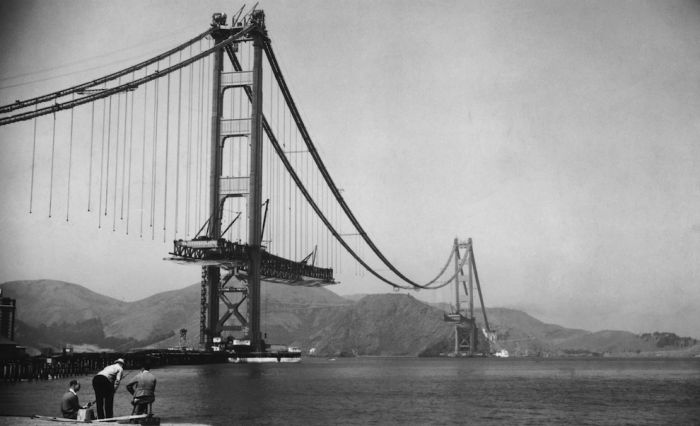|
|
History: Construction Of The Golden Gate Bridge, San Francisco, California, United States
|
For comparison, the reported third-most-popular place to commit suicide in the world, Aokigahara Forest in Japan, has a record of 78 bodies, found within the forest in 2002, with an average of 30 a year. There were 34 bridge-jump suicides in 2006 whose bodies were recovered, in addition to four jumps that were witnessed but whose bodies were never recovered, and several bodies recovered suspected to be from bridge jumps. The California Highway Patrol removed 70 apparently suicidal people from the bridge that year.
There is no accurate figure on the number of suicides or completed jumps since 1937, because many were not witnessed. People have been known to travel to San Francisco specifically to jump off the bridge, and may take a bus or cab to the site; police sometimes find abandoned rental cars in the parking lot. Currents beneath the bridge are strong and some jumpers have undoubtedly been washed out to sea without being seen.
The fatality rate of jumping is roughly 98%. As of July 2013, only 34 people are known to have survived the jump. Those who do survive strike the water feet-first and at a slight angle, although individuals may still sustain broken bones or internal injuries. One young woman, Sarah Rutledge Birnbaum, survived, but returned to jump again and died the second time. One young man survived a jump in 1979, swam to shore, and drove himself to a hospital. The impact cracked several of his vertebrae. On March 10, 2011, 17-year-old Luhe "Otter" Vilagomez from Windsor High School in Windsor, California, survived a jump from the bridge, breaking his tailbone and puncturing one lung, though he said his attempt was for "fun" and not suicide. The teen was helped to shore by Frederic Lecouturier, 55, who was surfing under the bridge when he saw Vilagomez jump. The California Highway Patrol ("CHP") recommended the San Francisco District Attorney's Office charge the student with misdemeanor trespassing (a charge which entails climbing any rail, cable, suspender rope, tower or superstructure not intended for public use), punishable by up to a year in county jail and/or a fine up to $10,000. Additionally, the CHP Marin Area recommended the teen undergo a medical/psychiatric evaluation by medical professionals.
Engineering professor Natalie Jeremijenko, as part of her Bureau of Inverse Technology art collective, created a "Despondency Index" by correlating the Dow Jones Industrial Average with the number of jumpers detected by "Suicide Boxes" containing motion-detecting cameras, which she claimed to have set up under the bridge. The boxes purportedly recorded 17 jumps in three months, far greater than the official count. The Whitney Museum, although questioning whether Jeremijenko's suicide-detection technology actually existed, nevertheless included her project in its prestigious Whitney Biennial.
|
|









